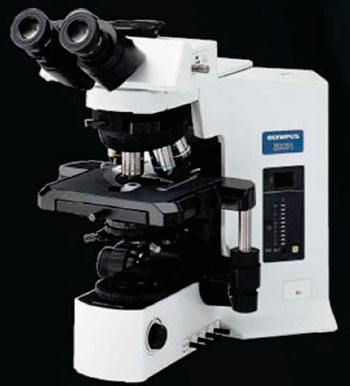Egg Size Differentiates Causative Agents of Human Diphyllobothriosis
By LabMedica International staff writers
Posted on 07 Jun 2016
Tapeworms of the order Diphyllobothriidea are parasites of tetrapods and several species may infect man and cause neglected human disease called diphyllobothriosis, which occurs in areas where lakes and rivers coexist with human consumption of raw or undercooked freshwater fish.Posted on 07 Jun 2016
Identification of human-infecting diphyllobothriid cestodes is difficult because of their morphological uniformity, which concerns also their eggs in stool samples. The principal species causing diphyllobothriosis is Diphyllobothrium latum, known as the broad or fish tapeworm, or broad fish tapeworm.

Image: The BX51 optical microscope (Photo courtesy of Olympus).
Helminthologists at the University of South Bohemia (České Budějovice, Czech Republic) analyzed by far the largest dataset of more than 2,000 eggs of eight species of diphyllobothriid cestodes that may infect humans, including the most frequent human parasites D. latum, D. nihonkaiense and Adenocephalus pacificus (syn. D. pacificum). Size (length, width and length/width ratio) and the surface of the eggshell from naturally and experimentally infected hosts were studied using light and scanning electron microscopy.
Gravid tapeworms and/or positive stool samples were obtained from naturally and experimentally infected specific hosts belonging to 19 species, including man; most samples were obtained from museum collections. They were identified using identification keys based on morphology and mostly also by genotyping, sequencing the Cytochrome c oxidase 1 (cox1) gene. Morphometrical variability was studied in 62 samples of a total of 2,082 eggs of eight species. These samples were fixed in 70% ethanol, 4% formaldehyde solution or, in few cases, measured alive in the water. Measurements were taken using Olympus BX51 microscope (Olympus, Tokyo, Japan). Samples were also examined by a JSM-7401F scanning electron microscope (JEOL, Tokyo, Japan).
The scientists found a high degree of intraspecific and host-related size variability could be detected, but combination of morphometrical and ultrastructural data made it possible to distinguish all of the studied species, including otherwise quite similar eggs of the three most common species infecting man, D. latum, D. nihonkaiense and D. dendriticum. The study provided evidence that combination of several characteristics assessed by statistical methods represents a useful tool to differentiate otherwise indistinguishable eggs of human-infecting broad fish tapeworms.
The authors concluded that even though a detailed morphometrical and morphological (ultrastructural) characterization of the diphyllobothriid eggs is not inconsequential, the relatively fast and cheap method and could be used for routine diagnostics. Accurate identification of the species causing diphyllobothriosis is essential for understanding of the epidemiology and transmission of this neglected fish-borne human disease, which seems to have emerged or reemerged due to changing eating habit even in the most developed countries. The study was published on May 25, 2016, in the journal Public Library of Science Neglected Tropical Diseases.
Related Links:
University of South Bohemia
Olympus
JEOL













